Bite into a perfectly cooked piece of chicken and you’ll taste more than seasoning—you’ll discover a world of kitchen arguments that happen in countless homes. Some folks swear by chicken straight from the oven: juicy, flavorful, and hands-free. Others insist nothing beats chicken in a sizzling hot pan—mouthwatering crust and that signature golden color. But which method actually gives you the best result? The answer isn’t as simple as it sounds. Cooking isn’t just following a recipe—it’s about finding the method that fits the meal, your time, and yes, your cravings. I’ve tried more than my share of both and never stop learning new tricks in my quest for perfect chicken. Grab your spatula, preheat your oven, and get ready to unravel what really makes one way shine over the other.
Flavor Showdown: Oven Baked Chicken vs Pan Seared Chicken
Let’s talk flavor, because that’s the first thing anyone cares about. Pan searing chicken, with a glug of oil and maybe a smack of butter, means gorgeous browning—what culinary nerds call the Maillard Reaction. It’s a chemical thing that turns chicken brown and gives it that deep, roasted, almost nutty flavor. Sear a boneless chicken breast or thigh in a cast-iron pan—medium-high heat—and you’ll see what I mean: sizzle, dance, and soon the smell wafts up. Every side gets caramelized, sometimes in as little as 2-3 minutes per side for thin cuts. The pan also soaks up all those brown bits, letting you whip up a killer pan sauce right in the same dish. Think white wine, splash of cream, handful of herbs.
Baked chicken, on the other hand, leans into gentle heat. That means less crispiness (unless you crank the oven hot or use skin-on cuts), but more even, juicy doneness. If you marinate or brine your bird before baking, every bite stays moist—even in the dreaded dry chicken breast. Seasoning is key: oven heat lets flavors seep in slowly. Try paprika, garlic, lemon zest—play with it. Sheet pan dinners are made for baked chicken. Toss veggies around the bird, and you have the full meal cooking together, soaking up the juices in the process. The aroma when you open the oven? Unbeatable. If you use bone-in skin-on pieces, the skin can get surprisingly crisp at 425°F, too. This gives you a different kind of experience: more subtlety, less immediate crunch, but deep comfort and flavor penetration.
Which is better for flavor? Pan searing gives fast, intense surface flavor—ideal for quick, craveable meals. Baking is for slow, deep, all-over savoriness, letting marinades and seasonings shine. Sometimes, the magic is in the mix: pan sear to brown, then finish in the oven for juicy meat and a crusty outside. That’s how restaurants often get the best of both worlds.
Texture, Juiciness, and Crust: What Makes Chicken Satisfying
Good chicken makes you want to keep eating—bad chicken turns dry, stringy, or rubbery nobody wants. Texture matters almost as much as taste. Pan-cooked chicken can feel springy, especially if you use high heat and keep it moving. That’s perfect for thin cutlets, tenders, or chicken breasts scored to speed up cooking. Quick browning keeps most juices inside, especially with a lid for the last minute or two. But overdo it, and meat turns tough. Pan heat can be hard to control; that’s the tricky part.
Baked chicken can feel juicier because steady oven heat gently cooks protein from the outside in. Toss a skin-on thigh in at 400°F, and forty minutes later it’s impossibly moist—the skin even crisps if you broil the last few minutes. If you use boneless, skinless breasts, though, it’s easy to go too long and wind up with blandness. Pro tip: bake at higher heat, remove when the thickest part hits 160°F (it’ll keep rising after). Let it rest under foil for juiciness. For really juicy chicken, brining—soaking chicken in salted water for an hour or two—makes all the difference. This tip works for both oven and pan, but with baking you’ll really notice the boost.
Want crunch? Pan wins most times, especially with flour dredging or panko bread crumbs. Think chicken schnitzel, fried cutlets, or even the classic chicken parmesan. Baking can do crispy too, though. A rack set over a sheet tray lets hot air circulate all around, and a spritz of oil or a bread crumb topping bubbles up golden. Air fryers basically combine the best of oven and pan—hot, quick moving air for a super crisp crust, but that’s kind of a tangent. For pure kitchen tools, pans give fastest crunch, ovens give deepest juiciness.
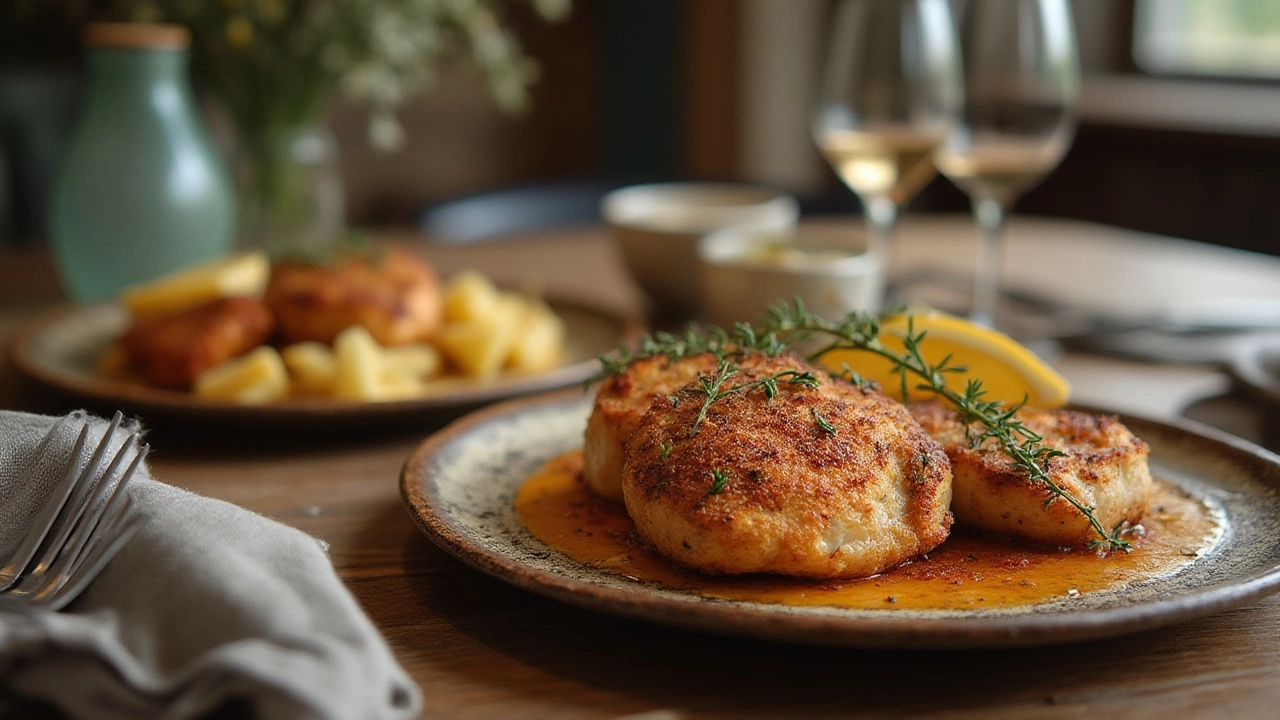
Nutrition Breakdown: Health, Calories, and What Each Method Brings
If you’re trying to keep meals healthy, the way you cook chicken changes more than you might think. First off, the basics: three ounces of plain, skinless, baked chicken breast packs about 140 calories, 26 grams of protein, and 3 grams of fat. Cooking chicken with skin and thighs—extra flavor, sure—boosts fat and calories quickly.
Pan-cooked chicken can mean extra fat if you get a little carried away with oil or butter. A typical sear needs about 1-2 tablespoons of oil, which is between 120-240 calories extra for a batch—divided up, but it adds up. Fried chicken, of course, is a whole different planet for calories. Some pans let a lot of oil drain off, some don’t. Most home cooks use olive or vegetable oil; olive oil adds a nice boost of healthy fats (monounsaturated) and a flavor bonus, but it’s still pure calories.
Oven-baked chicken wins for pure health if you use skinless meat and go light on oil or butter. You control what’s in the dish and skip any need for deep frying. Veggies cooked alongside chicken in the oven can soak up healthy juices instead of extra fat. Here’s a fun fact: a 2024 survey in the Journal of Culinary Health found home cooks ate 20% more veggies when they did one-pan oven meals versus pan-only cooking—maybe because it’s easy to toss everything together at once.
Here’s a simple data table comparing some basics. These numbers are for a skinless, boneless chicken breast, cooked with just a teaspoon of oil:
| Cooking Method | Calories | Fat (g) | Protein (g) | Extra Oil Used? |
|---|---|---|---|---|
| Oven Baked (400°F, 30m) | 150 | 3.2 | 26 | Minimal (teaspoon for pan/foil) |
| Pan Seared (medium-high, 8m) | 170 | 5.5 | 26 | Typically 1 tbsp (optional) |
| Air Fried (400°F, 18m) | 155 | 3.5 | 26 | Spray oil only |
| Deep Fried (rare at home) | 210+ | 10+ | 24 | Immersed |
If you’re watching calories, fat, or sodium, the oven usually leads, especially if you avoid batters and heavy seasoning. Both methods provide that high-protein punch. But don’t forget, the cuts and sauces matter just as much as the method. Marinate with yogurt, lemon, or even salsas for flavor without extra fat. Use chicken thighs or drumsticks if you want more flavor, but know the fat content jumps up faster (up to 8g per serving). Fresh herbs and citrus zest go a long way in both oven and pan chicken.
The bottom line: for pure health, oven often wins, but smart pan cooking—using less oil, draining off excess, and skipping breading—keeps things in check. And grilling? That can be even lighter, but that’s another topic for another day.
Time, Convenience, and Mess: What Real Life Looks Like
On a busy weeknight, speed and cleanup can matter more than anything else. Here’s where the debate gets practical. Pan cooking feels faster because, for thin breasts or cutlets, it’s done in about 8-10 minutes flat. You get to interact with the food, smell it change, check doneness up close. But, there’s tradeoffs. Cooking up four or six pieces? Some pans just can’t fit that much, so you do batches or risk overcrowding and losing your sear. The stovetop can go from golden brown to smoky kitchen in just seconds, if you look away to check your phone. Cleaning a greasy pan, spatters on the backsplash—if you’ve cooked chicken in a white t-shirt, you know the pain. Frying, especially, leaves a kitchen in need of serious cleanup.
Baking chicken is the hands-off winner. Prep it, season it, maybe marinate, then pop in the oven and forget it for 25-40 minutes. Sheet pans are super easy to line with foil or parchment, making cleanup a breeze. If you’re feeding a group or doing meal prep, nothing rivals the oven for bulk cooking. Set up a rack, drizzle, season, then play with flavors for multiple meals—buffalo chicken here, lemon garlic over there. Oven space fits veggies, too, so you can skip extra pans. Let’s not ignore that a full oven will heat up a small kitchen, though—you don’t want to bake on a 100°F summer day unless you have AC or a cold drink ready.
For mess factor, frying wins the “what did I just do?” award. Baking keeps things tidy, especially if you crowd the tray with potatoes, carrots, or squash. If you like saucy chicken, both methods work—but the pan gives you more control for pan sauces or reducing broths, while oven braising (partly covered) gives you fork-tender meat swimming in its own juices.
See how the answer is never one-size-fits-all? Craving fast, crispy chicken for one or two? Toss it in the pan. Want an easy dinner for the family and leftovers for lunch? Load up the oven. Both methods have hacks for making life easier: try pounding chicken breasts to even thickness for even pan cooking, or brine overnight before roasting for unbeatable texture. And if you forget to thaw your chicken? Oven roasting from frozen actually works, just add extra cook time—try that in a pan and you’ll get a watery, uneven mess.
Still not sure which is better? Use your mood, your schedule, and your kitchen tools to make the call. Mix and match, get creative, and don’t be afraid to break the “rules.” Whether you land on chicken in oven or pan every time, you’re now totally prepped to make the call with confidence—and maybe even teach someone else a trick or two at the stove.
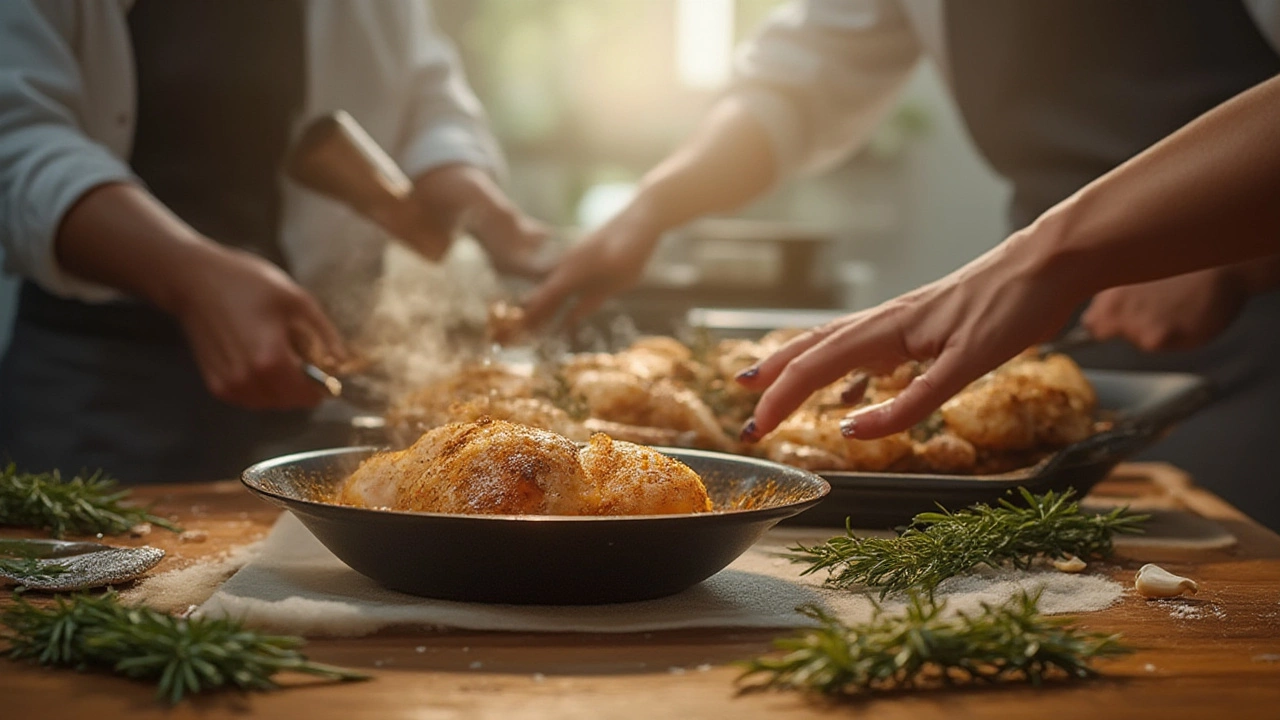

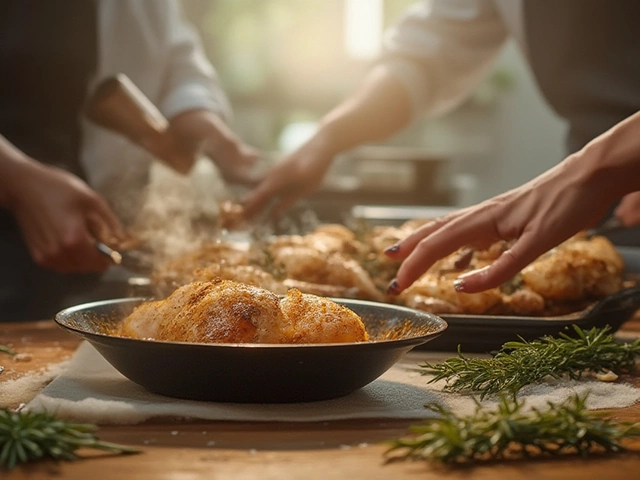
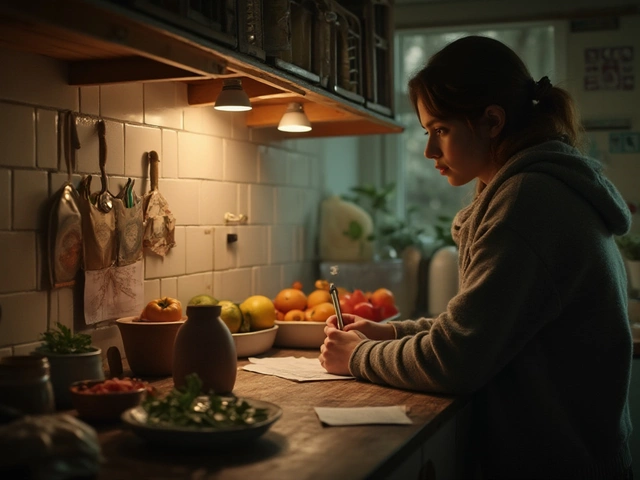
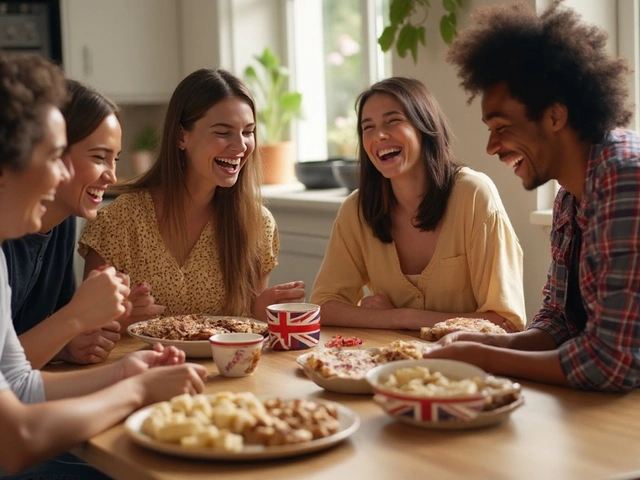
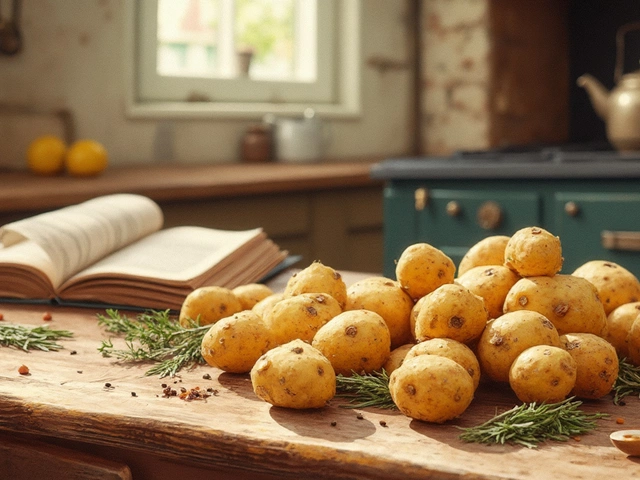
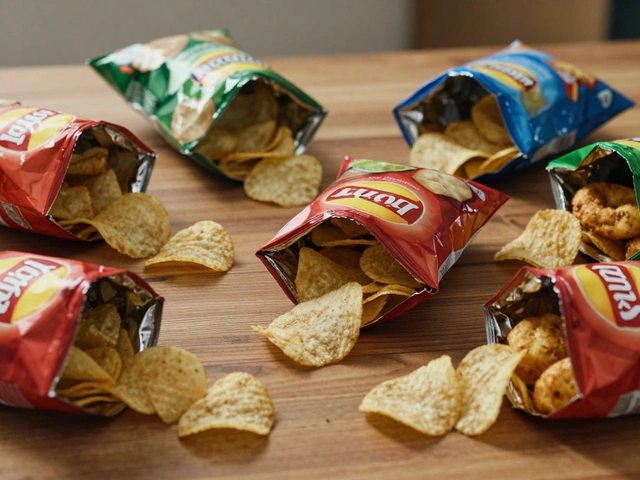
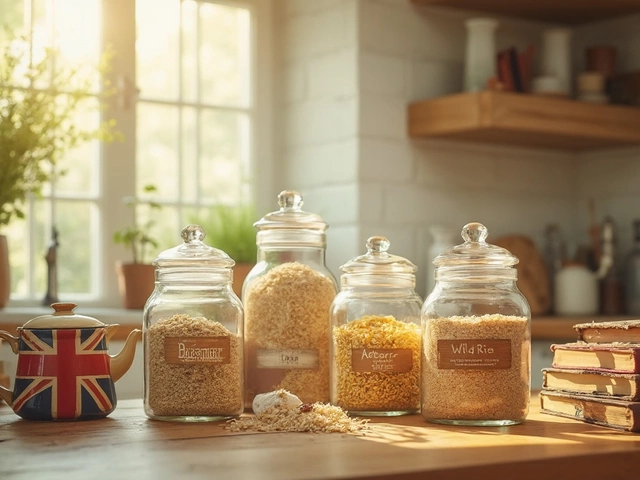
Write a comment